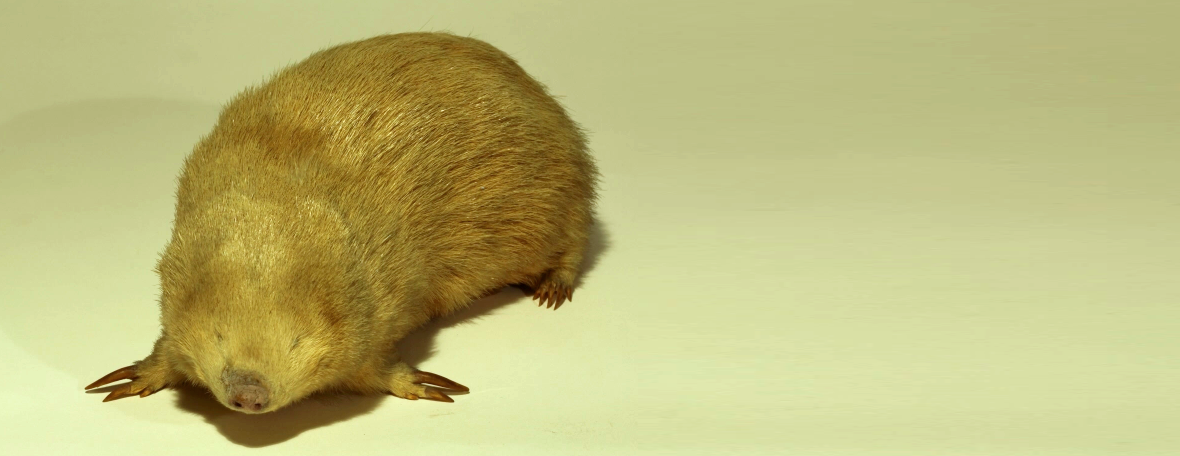
Touted as the world’s largest known mole species, it’s the giant golden mole. There are 21 known species of golden moles and all are endemic (live nowhere else) to South Africa. They can only be found in Pretoria (the Nylsvley region) and southwestern parts of Kruger National Park. Like all moles, they are fossorial (spend most of their lives underground). They prefer sandy soil under grasslands with an abundance of scattered trees and bushes – called bushveld. 11 of the 21 species of golden moles are listed as Endangered by the IUCN. This is due to habitat destruction, hunting, trapping, and human-based recreational activities. Their numbers are also decreasing.
First the Stats…
Scientific name: Chrysospalax trevelyani
Weight: Up to 19.2 ounces
Length: Up to 9.4 inches
Lifespan: Up to 4 years
Now on to the Facts!
1.) Their webbed back legs are perfect for shoveling dirt out of their burrows.
2.) The curved claws on their front legs are great for excavating tunnels.
3.) Like all moles, they have predominantly non-functional eyes, since they spend most of their lives in dark tunnels, they have de-evolved the need for visual acuity.
4.) What they lack in vision, they make up for in hearing and touch. Their ultra-keen sense of touch helps them in finding food and avoiding predation.
5.) The tunnel systems of these moles are complex and even allow for a designated area to defecate (poop and pee).
But wait, there’s more on the giant golden mole!
6.) Giant golden moles prey on insects, earthworms, snails, and termites.
7.) During times of extreme heat or cold, golden moles will enter into torpor (a kind of brief hibernation).
Did you know…?
Giant golden moles have the ability to literally turn off their thermoregulation (the body’s ability to regulate heat). This is thought to be a method of conserving energy in lean times.
8.) Snakes, owls, and domestic dogs all prey on these moles.
9.) Golden moles are nocturnal (active at night).
10.) Giant golden moles belong to a group of African mammals, called Afrotheria.
But wait, there’s more on the giant golden mole!
11.) Like other moles, golden moles are solitary. They only come together to mate.
12.) While normally silent, these moles will produce clicks and squeals during their mating ritual.
Did you know…?
Giant golden moles are more closely related (believe it or not) to hyraxes, elephants, and dugongs than to true moles.
13.) Mating season lasts from October – November.
14.) Females undergo up to a 6 week gestation (pregnancy) that yields up to 2 altricial (blind, hairless, and helpless) young.
15.) Mom aggressively defends her burrow while rearing her young.
Now a Short Giant Golden Mole Video!
This video covers golden moles, in general.
Be sure to share & comment below! Also, check out the Critter Science YouTube channel. Videos added frequently!
Want to suggest a critter for me to write about? Let me know here.



